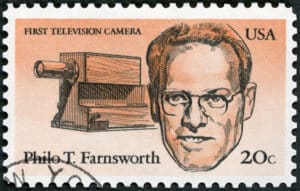Nowadays several social media platforms are shifting towards an increased presence of video materials. Facebook, Instagram and even Twitter are presenting every day more and more content with short videos. Nevertheless, according to the United Nations (UN), television continues to be the single largest source of video consumption.
According to the same source, though screen sizes have changed, and people create, post, stream and consume content on different platforms, the number of households with television sets around the world continues to rise. The interaction between emerging and traditional forms of broadcast creates a great opportunity to raise awareness about the important issues facing our communities and our planet.
“World Television Day is not so much a celebration of the tool, but rather the philosophy which it represents. Television represents a symbol for communication and globalisation in the contemporary world. “states UN website, while reminding each of us of the importance of TV in our societies.
A Historical Review
21 November was proclaimed as World Television Day by the United Nations, in December 1996, commemorating the date on which the first World Television Forum was held in the same year. For more than two decades now, this day is observed annually in acknowledgment of the role that television has had and, despite different circumstances, is still having on bringing attention to threat, conflict and disturbances challenging the wellbeing, peace and security of society. While today, communication has different means and it occurs in numerous platforms, television represents one of the most crucial symbols of globalization and communication in the modern world. The UN recognises television plays a major role in presenting different issues that affect people, so we celebrate how television is a symbol for communication and global education.
The marking of this day was done in recognition of the increasing impact television has on the process of decision-making. Television was thus acknowledged as a major tool in informing, channeling and affecting public opinion. Its impact and presence and its influence on world politics could not be denied.
The Invention of TV

The television remains one of the most prominent and famous inventions of the 20th Century. The first electronic television was invented by 21-year-old inventor Philo Taylor Farnsworth, in 1927. He was just 14 years old when we began to dream and work for the idea that would drastically change his life and that of the whole humankind. Living without electricity, in high school he began to think of a system that could capture moving pictures, change them into a code, and then move those images with radio waves to different device. Little did he know that the television would be one of the main means of spreading and gaining information in human history.
If you were wondering what was the first image ever transmitted by television – it was a simple line. Later, after facing the question of an investor, “When are we going to see some dollars in this thing, Farnsworth?”, Farnsworth would transmit a dollar sign using his television.
However, according to the History of the Net, there is not an easy answer to who invented the television. That’s because, the idea of having something that transmits moving images existed long before the first television was built. In the late 19th century, a couple of scientists made pivotal discoveries, without which the first television would not have existed. In the 1920s, over 50 inventors from Japan, Britain, Germany, America and Russia were all seriously attempting to build televisions, many of which had very promising demonstrations.
Undoubtedly, the invention of TV, which is still evolving, is one of the most important and powerful inventions tools to inform and educate people from all the four corners of the world.
Click here for an interesting informative UN video What Is TV Anymore?. As we agreed that the invention of television changed our media landscape forever, through this video one is introduced to the meaning of TV-in today’s hyper connected world.
Interesting facts about TV

The average person will watch more than 78,000 hours of TV.
It has been calculated that the average American child sees about 13,000 deaths on television between the ages of five and 14.
On average, a British person spends a staggering nine and a half years in front of the box, according to a study of 2,000 people by UKTV, 2019.
In the United States, on average, people watch 3.5 hours of television a day.
And last but not the least…. the inventor Philo Farnsworth, didn’t actually like TV all that much.
“There’s nothing on it worthwhile, and we’re not going to watch it in this household, and I don’t want it in your intellectual diet,” he said once.
Nevertheless, TV, just like any other communication tool may also carry in itself its disadvantages- obesity, causing violence, and being a propaganda tool are among the key criticisms.
However, that may be another story for another Youth Time piece. Today, why not join the worldwide celebration of this day- turn on your TV and watch your favourite show.
We are living amidst a pandemic…and who does not need a bit of light fun in their lives.
Photos: Shutterstock / Photomontage: Martina Advaney
They probably didn’t think the television would be used for this in 1927…
Support us!
All your donations will be used to pay the magazine’s journalists and to support the ongoing costs of maintaining the site.
Share this post
Interested in co-operating with us?
We are open to co-operation from writers and businesses alike. You can reach us on our email at cooperations@youthtimemag.com/magazine@youthtimemag.com and we will get back to you as quick as we can.










